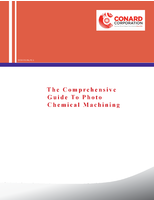Thin Flexible Magnet Addresses Tight Tolerance Requirements for Underwater Communications Tools
Cincinnati, OH - Whoever coined the adage that "bigger is better" clearly wasn't a scuba diver. In the underwater realms, where divers rely on a plethora of specialized safety gear to keep them alive, smaller is preferable to larger. So when Innovative Scuba Concepts, Inc., designed their latest addition to the Quest(TM) line of underwater writing instruments, they naturally downsized it. The Mini-Quest(TM) is designed to fit in a buoyancy compensator jacket pocket - nearly 40% smaller than their original Quest(TM) model. While the compact size is ideal for divers, it was challenging for the products designers.
The Quest(TM) product line offers divers a way to communicate to each other their depth, air remaining, or other various topics. "It is like a high-tech underwater Magna Doodle" says Innovative Scuba Concept's s engineering manager Debbie Miller. The Quest(TM) features a magnetic stylus for writing messages on a magnetic surface and a magnetic eraser-bar to clear the surface. Unlike their above ground brethren, however, the Quest(TM) must be designed to very tight tolerances and be able to withstand pressures common to most diving depths.
"All components have to fit perfectly together - there is no extra room in the design for movement in any direction", continues Miller. The high-energy magnets that are used for both erasing the writing surface and the stylus tip are manufactured to +/- 0.01" of the print dimensions. Quest(TM) uses Plastalloy magnets from Electrodyne which adhere to these equally tight tolerances with the added advantage of keeping size and weight down. As a point of comparison, common "fridge magnets" are 2 - 3 times thicker, and weigh at least twice as much as high energy Plastalloy for a given size. This reduction in both thickness and weight streamlined the profile of the redesigned Quest(TM) model, while enhancing its effectiveness as a communication tool.
"Refrigerator magnets are normally low energy material with one strong side and one weak side," comments Ken Koch from magnet manufacturer The Electrodyne Company. "High energy magnets are anisotropic, so both sides are equally strong. This means that they can be customized for a far greater range of applications," continues Koch.
In the case of the Quest(TM) redesign, it means a stronger attraction which translates to bolder writing on the Quest(TM) surface - so that divers' messages stay crisp and legible despite the surroundings. Equally important, though, it meant that the writing was completely erased when the eraser bar (containing Plastalloy magnetic material) passed over the message. Complete erasure of the magnetic slate ensures that there is no ghosting of images or writing to confuse divers.
A Legacy of Support
The palm sized QII(TM) is the latest addition in the family of underwater writing tools. When the product was nearing mold-making stage (for the case), Miller received magnetic samples from Electrodyne for evaluation and testing. Most importantly she was performing fit testing so that they could fine-tune the molding process around the magnet. This confidence in her magnetics supplier was apparently well earned.
The pocket sized version is less than a year old, though the original version has been manufactured for over 5-years. While thousands of Quest(TM) models (slates?) were produced during that time, Miller said "I can't recall a single incident when magnetic material was off-spec for any reason."
That is good news for the Innovative Scuba team as well as the divers who rely on their products to maintain safe and effective diving conditions.
About Electrodyne
With over thirty years of experience and nearly 50 patents awarded to them, The Electrodyne Company Inc., is an industry leader in magnetic material design and manufacturing. Their fully equipped lab can perform testing to include magnetic hysteresis, magnetic field mapping, tensile strength, elongation, gauss measurements, heat aging, pull testing, and more. All facilities are ISO 9001/2000 registered for quality assurance. For more information contact The Electrodyne Company, Inc., 4188 Taylor Road, Batavia, OH 45103, visit www.edyne.com, or call (513) 732-2822.
In addition to usage within the marine industry, Plastalloy(TM) is certified for the extremes of most automotive applications including exposure under the hood, and inside the engine, transmission and differential. It is also suitable for custom encoders and speed sensing magnets, as well as Hall Effect and other magnetically actuated switches, coin dispensing machines, spring overriding devices, electron beam deflection, appliances, and other commercial and industrial applications. Lead free Plastalloy(TM) is ROHS compliant, and ideal for environmentally sensitive applications.




